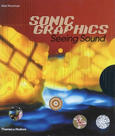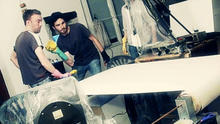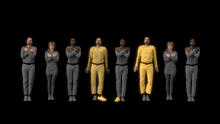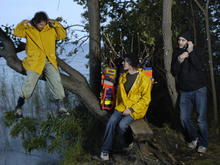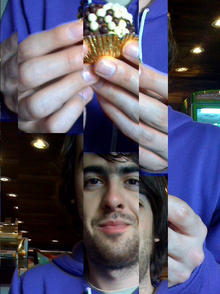Metronomy: On The Motorway
(2010)by French directors Jul & Mat for Metronomy. The video shows splashes and blobs of colorful paint being used in accordance to the beat of the music.
How did you get involved in the We Have Band promo?
Jul & Mat: After advertising, we wanted to make video clip (as we love music) , which is why we made On the motorway for Metronomy. That was really about self promotion, to let know to production companies that we wanted to make videoclip. And it worked! So we met lots of production companies and at the same time we heard We Have Band: Divisive and we liked it! This is a chance, but they needed a videoclip, so we entered the competition with the Metronomy promo. They liked our concept, and so we made it! It was a great experience. (…)
Tell us about your Metronomy paint film?
Jul & Mat: We first wanted to show what we were able to do, and that we wanted to make music videos. It was a great exercise too! We made it with nothing, but it was so much fun. We had this strong idea to mix painting and music, and finally found this track On The Motorway would really fit the concept. So, we called Metronomy to ask them , and they said ”OK guys , let’s do it”.
Source: Young Director Award
Awards:
Finalist music video VIMEO AWARD 2010 (New York)
Australian Effects & Animation Festival Awards 2010
Underground Cinema summer 2010
Source: Jul & Mat


